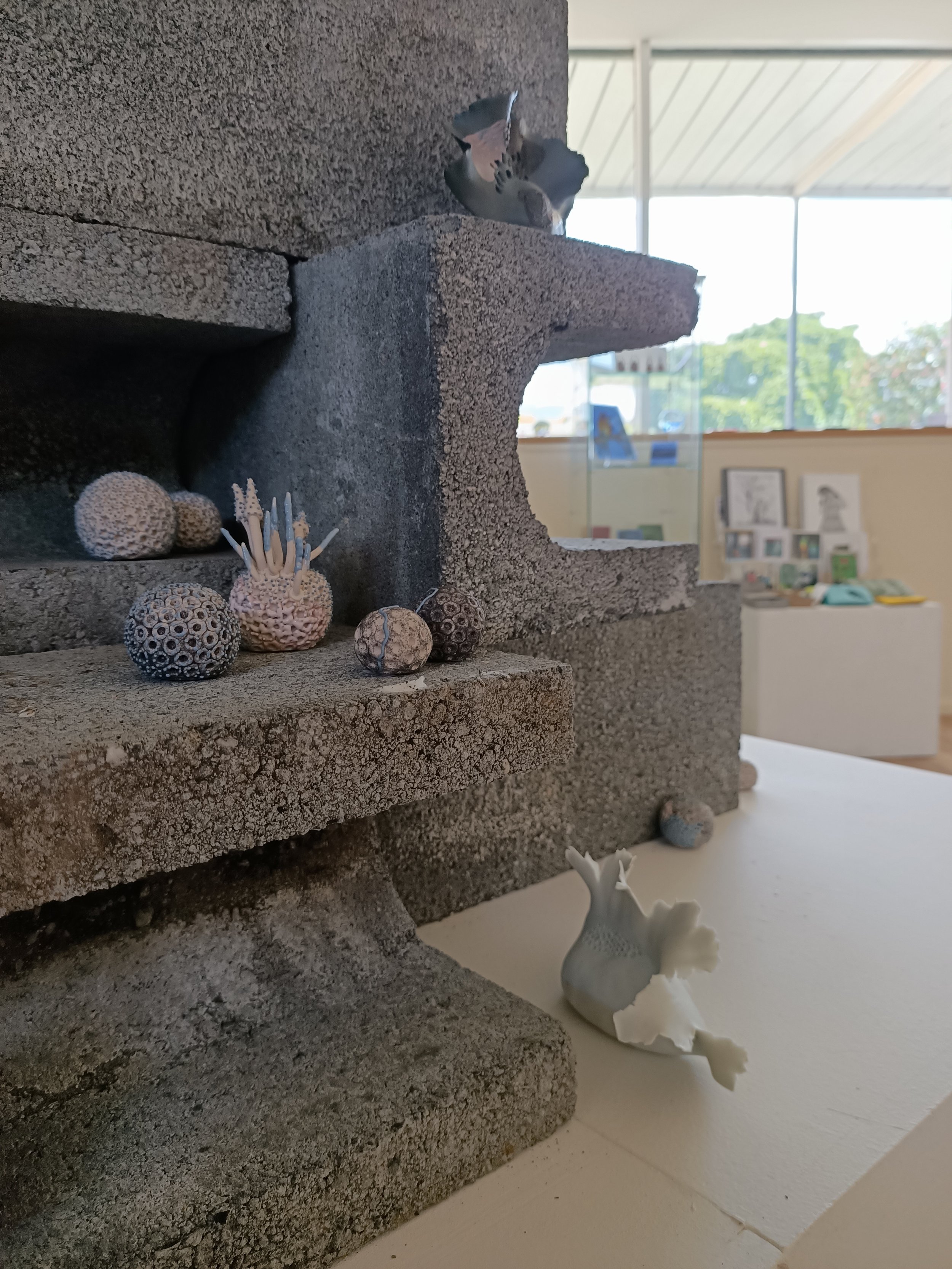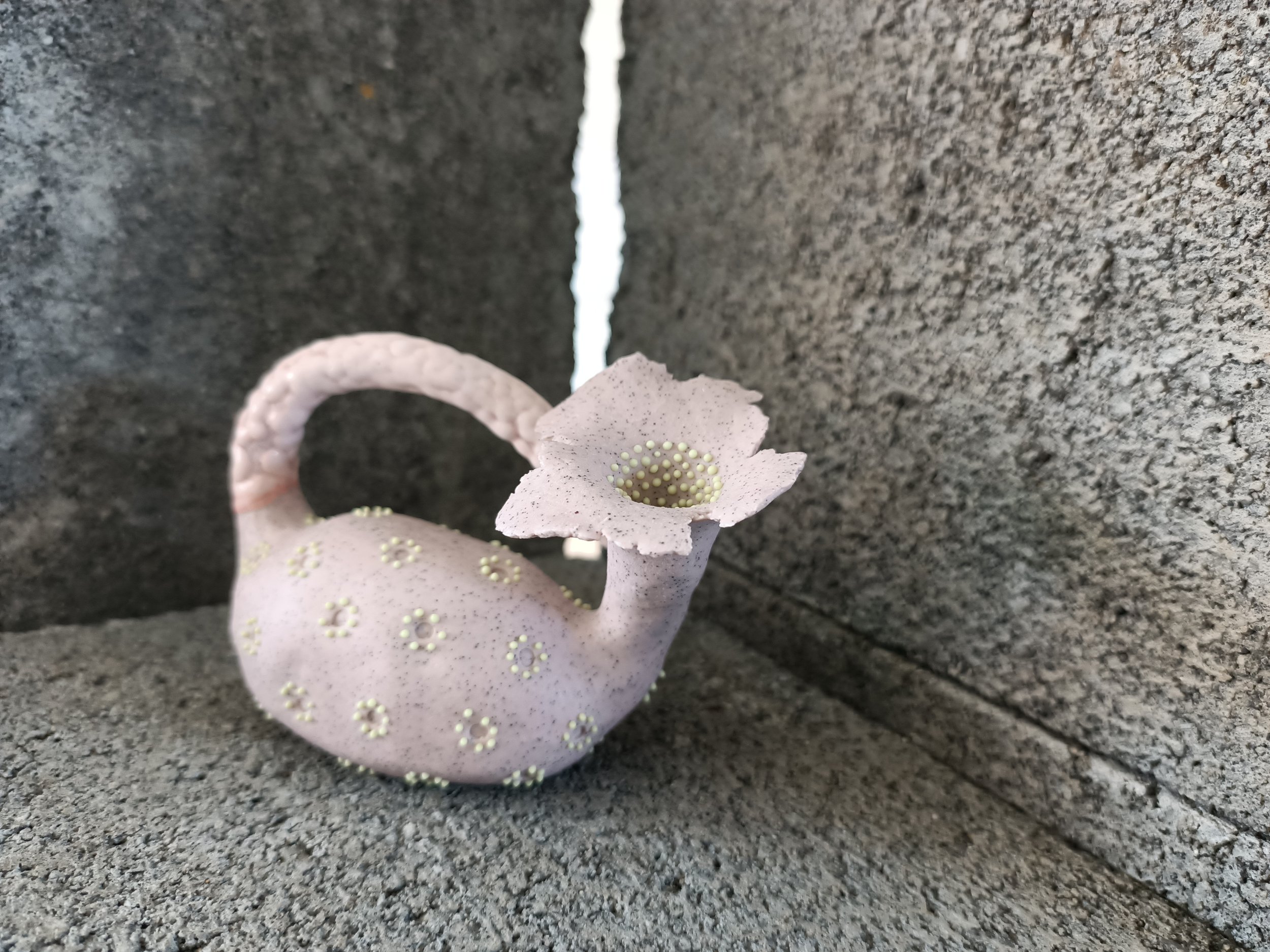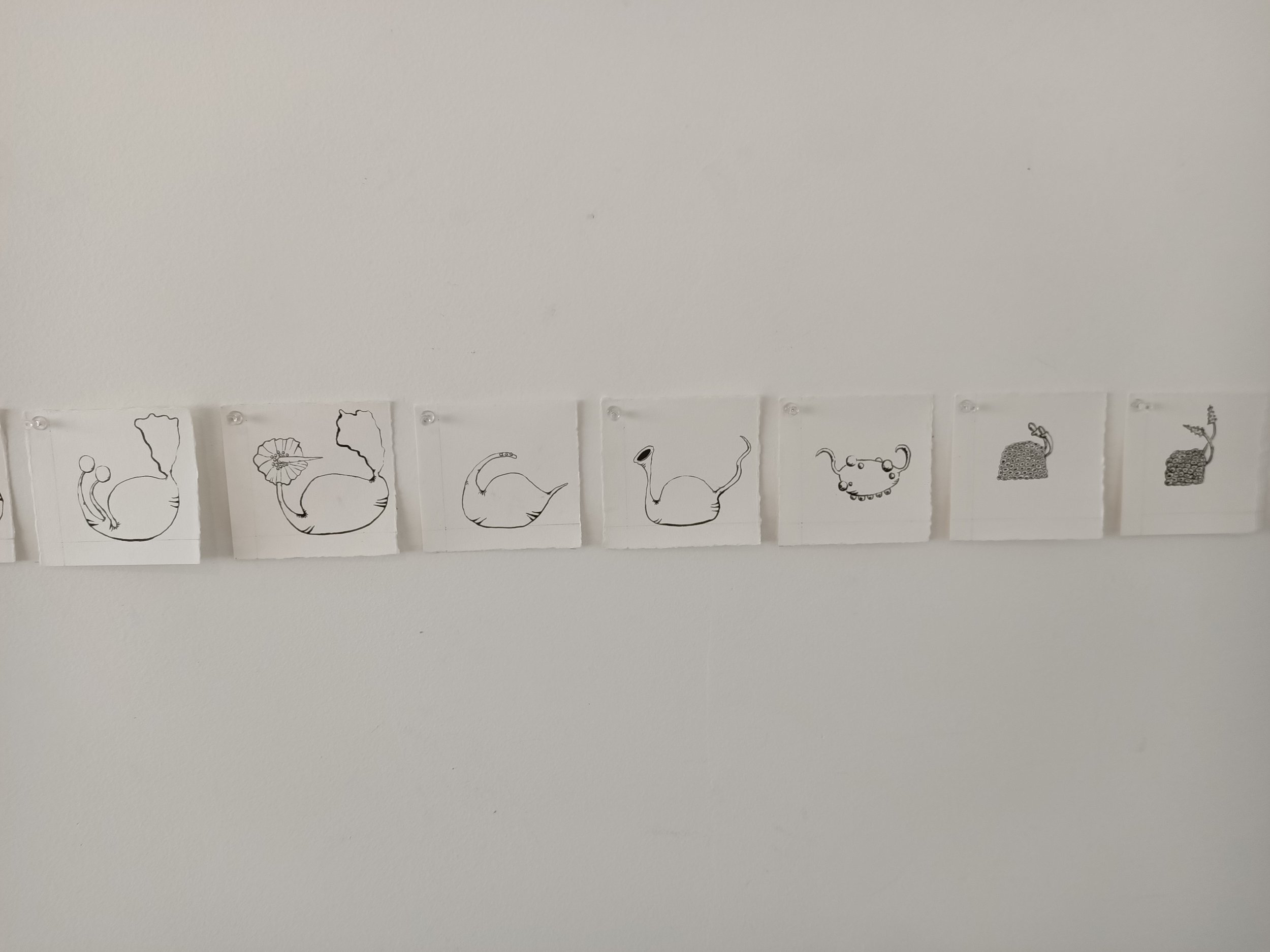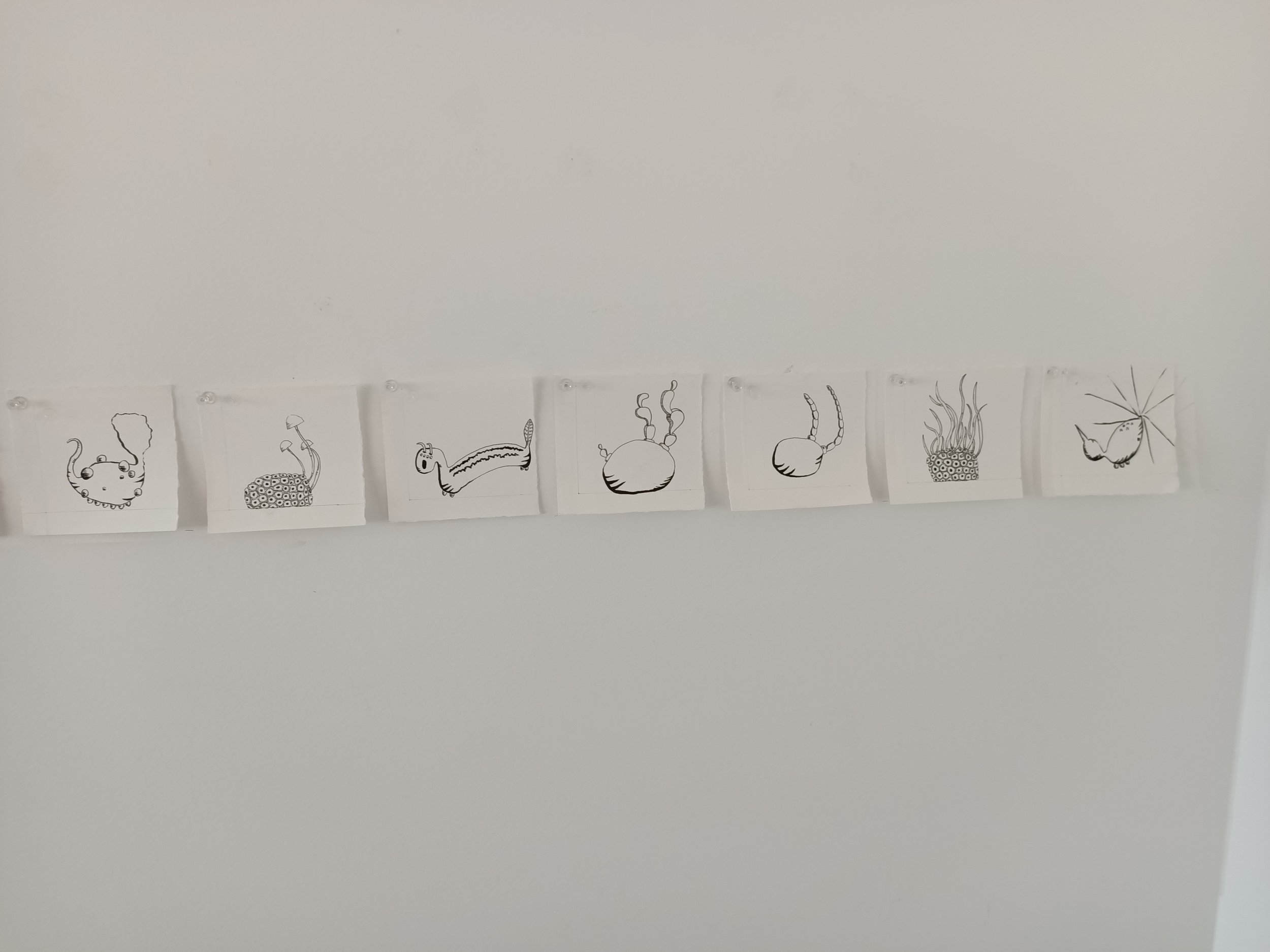
Poatina Tree Gallery, Poatina, Tasmania
The Poatina Tree Art Gallery is an artist-run initiative of Poatina Arts featuring local and regional Tasmanian artists. The gallery adjoins the popular Tiers Tea Lounge cafe and has a year-round artist exhibition program as well as art and craft items for sale
Past Exhibitions
28.02.21-10.04.21
Hybrid Organisms
'Hybrid Organisms' is an exhibition displaying works from the past two and a half years of my arts practice, including the completion of the Bachelor of Contemporary Arts and subsequent Honours year at UTAS, Inveresk.
The line of investigation the project embraced began focusing in on the hidden capacity of seeds, iterative regeneration and the promise encapsulated within. My intentions through making were to explore ideas of adaptation, defined as the seeds ability to physically express its inner secrets. Swift progressions in making saw the forms sitting on the side of categorisation as not identifiably seeds but so much more.
The opportunity to delve deeper into my Honours project over a longer time period saw much innovation and thought come together in the studio, where the major body of work you see in this exhibition was birthed. My Honours project, 'Making Anew: a restorative imagining of fictional hybrid organisms in ceramic form' considers the notions of hybridity, ecology and co-habitation alongside ideas of redemption, restoration and renewal through imagining fictional hybrid organisms - or what the project making has identified as Mycozoophytes (Fungi – animal – plants).
Inviting the emergence of the unknown and unseen, 'Making Anew' aims to imaginatively reveal the growth, cumulation and relationships of fictional hybrid organisms in the face of fragile and changing environments, marked by manufactured materials. Studio-based imagining through material enquiries alongside observations from nature, nature documentaries and scientific materials have provided rich imagery to support the generation of abstracted hybrid life-forms. Material investigations employed ways of making that were attentive to biodiversity, relatedness of organisms and the interdependence of ecologies. The process, therefore, lent itself to the additive/subtractive qualities of mutations, adaptations and evolutions identified as the intersection of biomimicry, imagination and the material of clay in the hand of the artist – making anew from the dust.
Growing up in the eastern suburbs of Melbourne it was not difficult to see urban sprawl devouring the landscape. Ever expansive ribbons of bitumen and concrete blanketed the sliced and diced paddocks, which, when I was a girl, housed cattle and orchards, and before that, bushland. Now when I visit those places I see giant movie theatres, industrial complexes and shopping malls. Further out, the carving and covering construction continues. As a person living with nature caught in the tides of tension that is the current geopolitical climate in relation to climate change, this project emerged from a desire to mitigate the heaviness I felt at the prediction of the disintegration of crucial connections and the impending collapse of entire ecosystems (Attenborough, 2019).
Moreover, 'Making Anew' creatively expresses my belief that redemption of the landscape is possible, believing that non-human life embraces an agency of its own to respond to a humanised environment, engage its resilience and do more than merely survive.
This project asks: what may the future hold? 'Making Anew' imagines a new hybrid – fungi-animal-plant-manmade material, Mycozoophyte artificialis – that embodies resistance and resilience through its interconnections with a broken and littered world. Seeing hybridity as a way forward, Patricia Piccinini argues:
"So many of the world’s problems come from separating things into the ‘pure’ and excluding anything that is deemed other. That is pretty much the definition of racism. Hybridity is an acknowledgement there is no ‘pure’, that we all exist on a continuum. When you do that it is far more difficult to exclude or malign. It is easier to destroy an environment from which we feel separate. My interest in hybrid forms comes from a belief that there is no ‘pure’, that we are part of a complex and diverse world. In fact, I would say there never was a ‘pure’ in the first place. It is a false dichotomy" (Artist Profile, 2020)
Contemplating the idea of purity and hybridity, a material response emerged in the late stages of the project where I began combining further additions of trachyte, rutile, ilmenite and magnetite iron spangles into clay bodies and mixing remnants of coloured clays together, recycling them to make a hybrid clay. Transforming the once white manufactured pure porcelain into a hybrid form that I named dirty porcelain. One such block of dirty porcelain was made into fungi-leech-like organisms, that I imagined would attach en masse to the steel used to support the enormous structure of the Arts Academy Stone building, Inveresk. As I crafted each one in the studio, I imagined what they may be named, considering their diet of iron and the visual presence of this in their physical attributes.
Hybrid Organisms', exhibited in the Poatina Tree Gallery, Tasmania aims to give the viewer insight into the journey of 'making as research' within the context of a contemporary arts project and to showcase ceramic sculpture as a gentle way to raise questions around the idea of ecology, cohabitation, hybridity and the agency of the non-human to assist in the redemption of a humanised planet.
I hope you, enjoy the exhibition and discover a new way of seeing.
(From the Exhibition Catalogue)






















